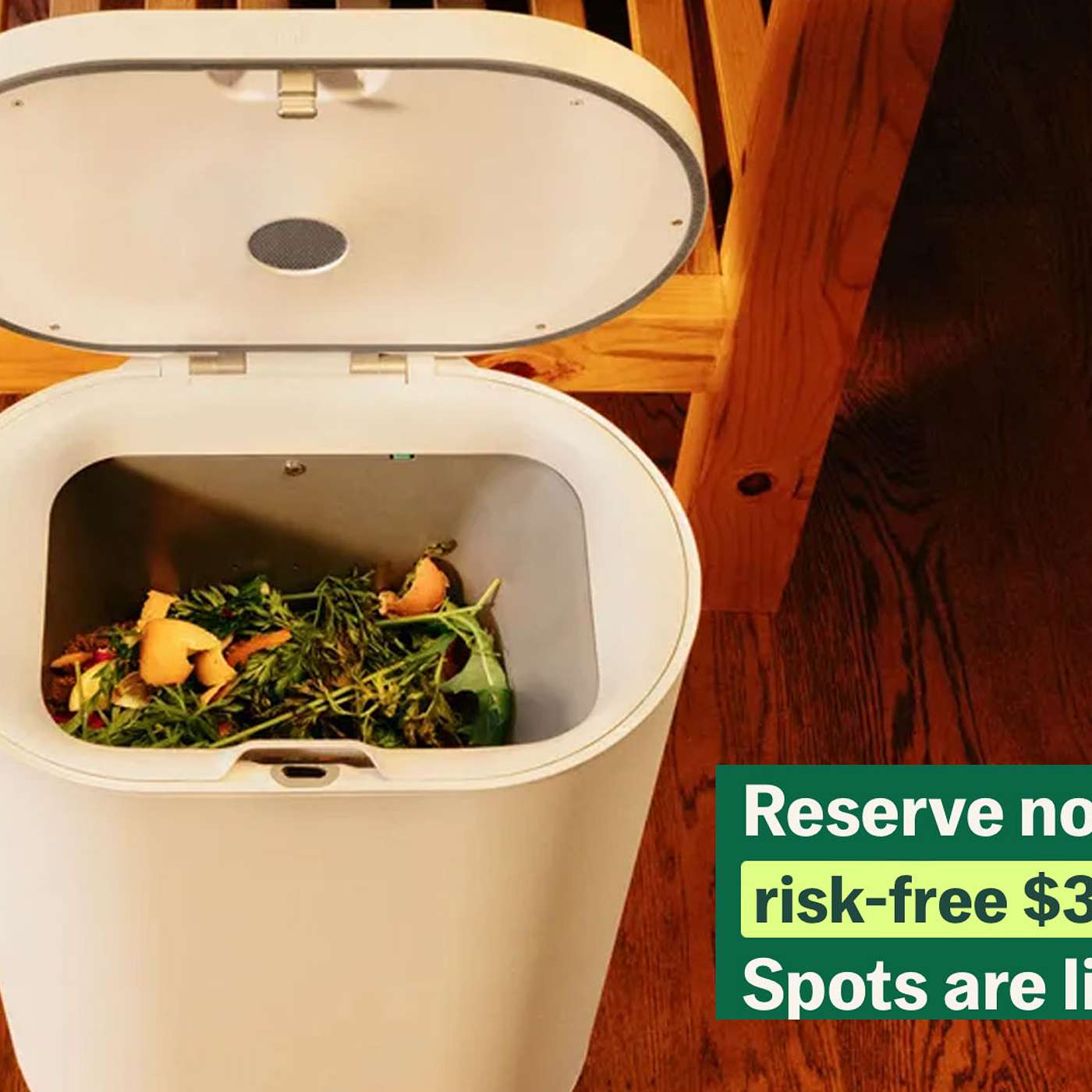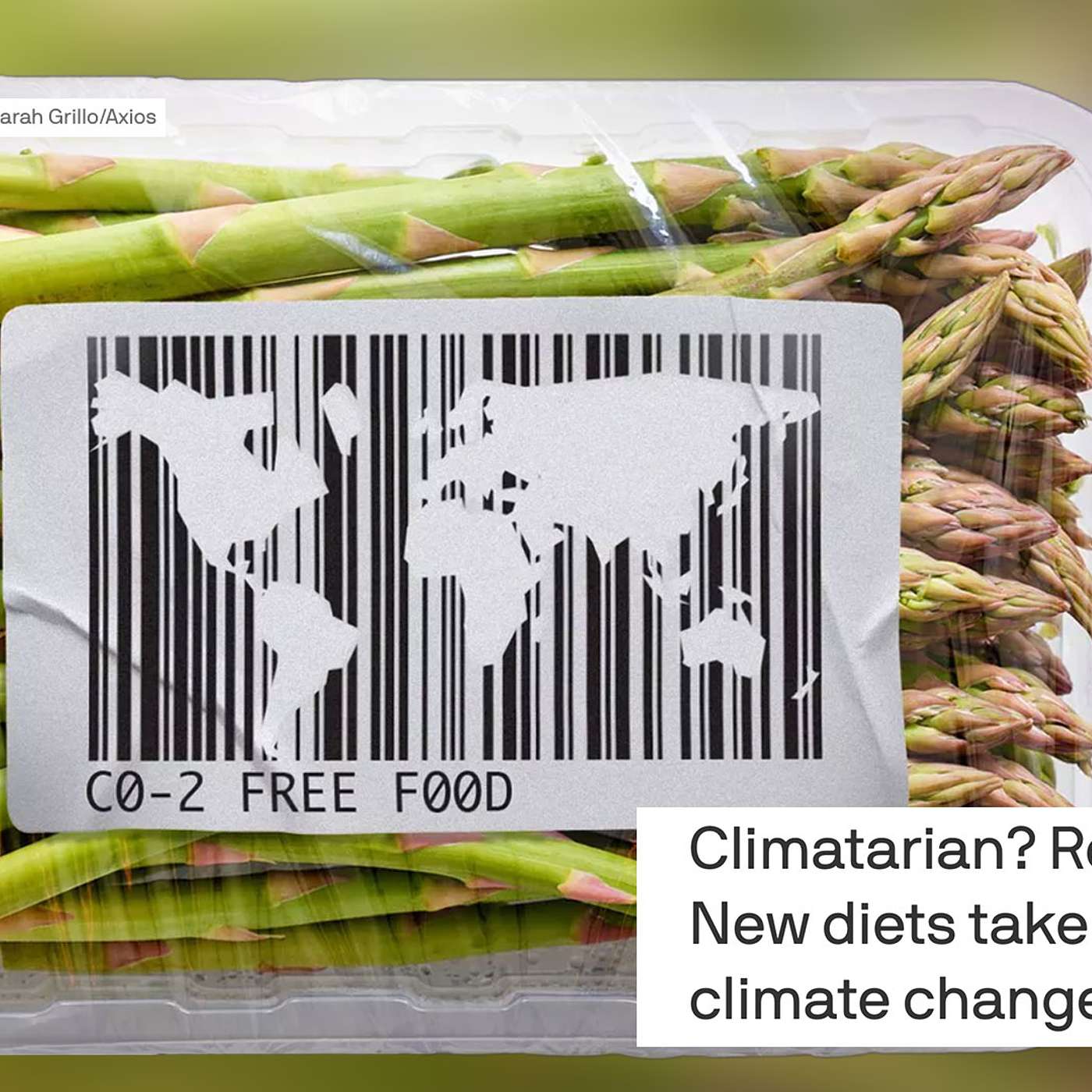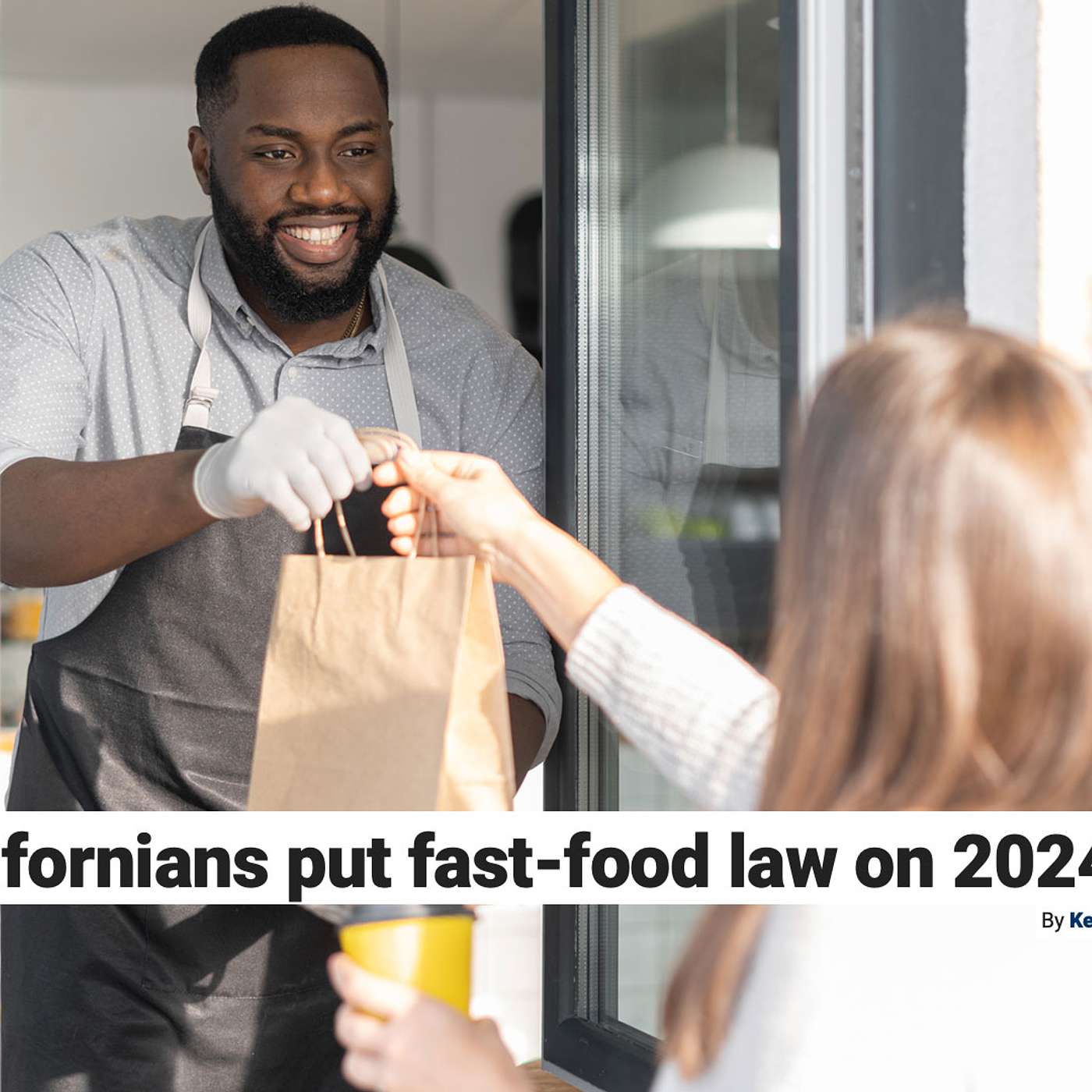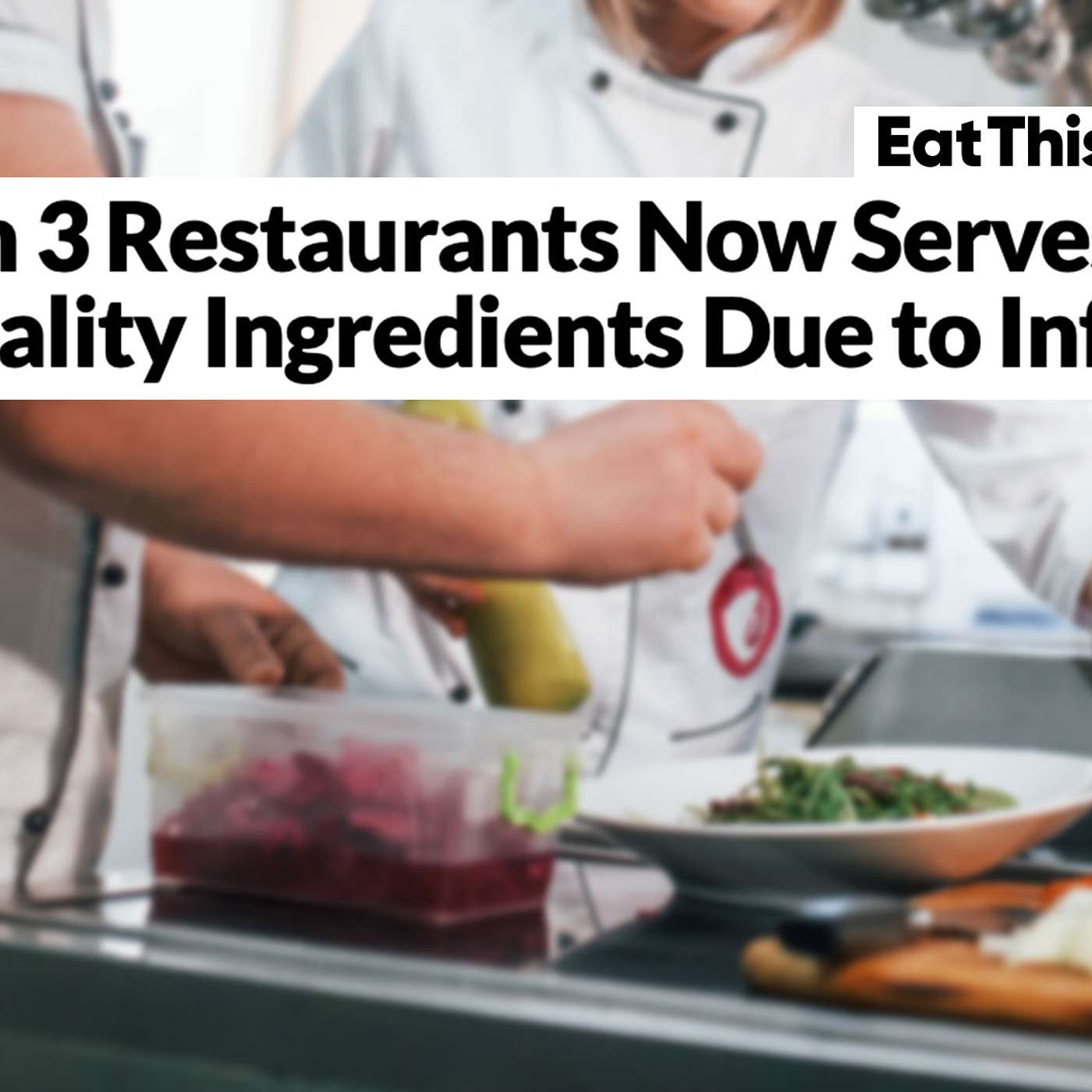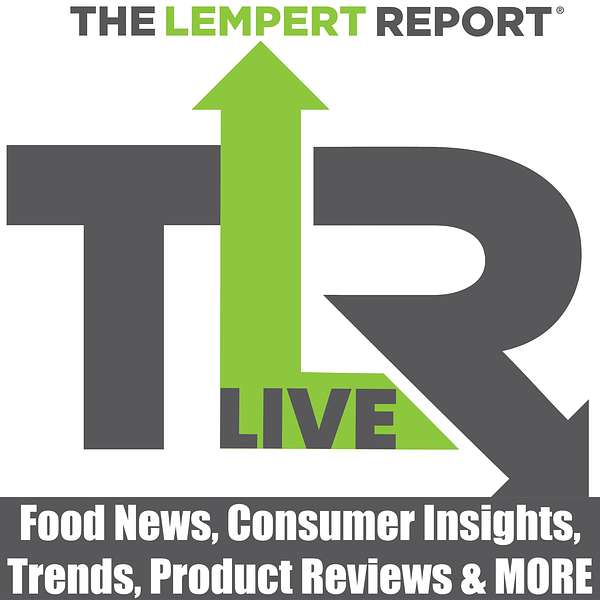
The Lempert Report LIVE
The Lempert Report LIVE
$9 Meal Challenge, Fast Food Bill, More Bad Branding
Welcome to the Lempert Report LIVE.
- A retailer’s $9 a day healthy meal challenge
- New food waste solutions
- The change in food consumer labels
- A bill in California to help fast-food workers
- Why your restaurant meals doesn’t taste quite the same any more
- Yet another brand reaches outside of their space to build their brand – and it’s lame.
Welcome to the Lempert Report LIVE. We start today’s broadcast with some disturbing news from last week, our friend and a true industry leader Frank Yiannis has resigned as Deputy Commissioner for Food Policy and Response at FDA. Frank has an illustrious resume leading the creation of the IBM Food Trust with Walmart and his insights and leadership led to the food blockchain which significantly increased the information available and time to track food recalls. Frank’s resignation came with a caution for us all: that the FDA has fractured leadership and as deputy commissioner he found the post had little authority and operates with a small staff. He urges the FDA Commissioner to create an experienced Deputy Commissioner for Foods, with power and direct oversight. The FDA needs people like Frank, and it is to the detriment of our entire industry that he has resigned. I can only imagine the calls from retailers and CPG companies that are laying offers at his feet. Thank you, Frank, for all your work. Today our insights discuss a retailer’s$9 a day healthy meal challenge, new food waste solutions, the change in food consumer labels, a bill in California to help fast-food workers and why your restaurant meals doesn’t taste quite the same any more. On Bullseye, yet another brand reaches outside of their space to build their brand– and it’s lame. Be sure to check out Food News Today on SupermarketGuru.com for the most up to the minute newsfeed courtesy of our partnership with Cision. And don’t forget to add your own insights and comments during the broadcast and we will share those after The Bullseye. Lets get started. So, Sally, I love this$9 a day challenge. I love it for a bunch of reasons. Jacqueline Gomes, a friend of ours at the RDBA side of life is the face of the$9 a day challenge, basically working with Allegiance. Allegiance is a wholesaler that provides Food Town, Fresh Town, D'agostino, Pathmark, Labella Marketplace, Brooklyn Harvest Market Fresh, Martin Williams, big Deal, Food Market, Greenway Markets and Shopping Bag, mostly in the New York metro area with a lot of services. And this$9 a day challenge is fabulous. They've worked closely with the chef of the New York State Public Schools to develop it. It's healthy, high quality meals on a budget of just$9 a day. What can I make for$9 a day?
Sally:Well, Phil, you are right. Jacqueline Gomes is fantastic. I wanna give her a big shout out. I watched these videos and she's got a great personality. And also the information is really great for shoppers. You know, all of these stores under Allegiance, you know, that they're servicing. These are locally family owned and operated stores, and so they're very in touch with, you know, economically what's going on with family on, with families, and how to feed them on just a little bit of money. So, for example, what sh what what they're doing is they, they start with a base protein. So, one series, the chicken is the protein. So, you've got your chicken for the day, and then you've got a, you've got a breakfast sandwich. They show you how to make out of chicken, a pesto, broccoli chicken salad for lunch, and then a tomato basil chicken, and it all adds up to$9. Now, there's, on the dinner, there's, there's really not any sides included in that. So you may spend a little extra if you get, you know, some rice or some pasta or a vegetable to go along with it. But it's really a brilliant and very helpful campaign to consumers, I believe.
Phil:And what Jackie has really done is she hit right on the nose, she's hitting, you know, the high price of food. She's hitting health, and she's making it in bite size, pardon the pun, bite size segments that people can do it. So yeah, kudos to Jackie. Great, great retail dietitian leading the way, once again. So let's talk about waste. We all know the numbers about waste. Every story that comes out talks about waste, waste, waste, but there's some new innovations about waste that we wanna share with you. Number one is a new product called the mill bin. It turns, this is in your home. It turns ordinary food scraps into chicken feed. It's an electric kitchen waste bin. It shrinks and distincts the typical kitchen food scraps over a course of several hours, turning them into usable food grounds. They're then returned back to Mill, they send you a box, you can return'em back, and it's processed into chicken feed and sent to different farms. What do you think about this idea?
Sally:Well, Phil, with more and more people wanting to get on board with helping to preserve the environment and to, you know, to do their part I think it's a great idea. The, you know what I'm, what I'm curious about what you think is about the price point of this, how consumers are gonna react to this, because what, what you've gotta do is if you sign up for a year it's$33 a month, so$369 you would pay upfront that gets you the machine that you put in your house. You operate it through an, an app on your phone. And then it also gets you the, the prepaid shipping containers to send back to mill your compost. If you don't go on a yearly plan and you wanna go month to month, it's a little bit more expensive. I think it's a$45 a month for that. So what I'm wondering is do shoppers have that in their budget right now? You know, they're being crunched to the grocery store, and so can we expect them to fork out another$33 a month to a and the time to box up compost and send it back?
Phil:Yeah, and, and there's a couple things. Number one is yes, I agree with you. The 33 bucks a month is a red flag for me for a lot of consumers. And again, keep in mind that, that a product like this is really designed for those people who aren't composting now. So it's not the diehards. These are, these are the people who care about the environment, don't know what to do. So you're not having a very committed audience, number one. Number two, the first thing that I heard when I heard about 33 bucks, they're also selling it back to farms. So they're making money from you and I, and they're making money from the farm that's selling it to it. I think it's an interesting idea. We'll see if it works. I, what I'd really like to see is I'd like to see them, you know, work with the government and give people some kind of tax credit for doing this. Let it let it come off of our income taxes where that$396 a year is really given back to us so we can feel good about it. And it's not coming out of our pocket at the same time we also see a new study that just came out from Ohio State University. And what they're doing when it comes to waste is estimating the best large scale uses for food processing waste. What they're doing is analyzing the contents of the waste, then proposing production opportunities that range from sustainable fuels, biogas, and electricity to useful chemicals and organic fertilizer. So what, what they're doing is really determining the value of the waste and then helping people figure out how to make money off it. One example from Ohio State is that they turn eggshells and tomato peels that are sourced from Ohio food producers into fillers that go into rubber products, partially replacing the petroleum based carbon black in tires. So, you know, I think it's a really cool idea. I think it's probably just in the beginning stages of it. And again, I just wonder how this, this can really reach commercial levels.
Sally:Yes. And it is a great start. I believe, you know, knowing what the, the uses of, and what the value can be in certain types of waste. And also, you know, maybe it's a start to encouraging food manufacturers, retailers, you know, to get involved in a way where they are not spending their resources and their money to help the planet, but they're actually getting something out of it themselves.
Phil:So the National Resources Defense Council, their food matter initiatives is expanding. What's that all about?
Sally:They have a great program. The Food Matters Initiative launched in 2015, but I guess it's just now getting, you know, it's really getting going here. And they're, they're, they're offering to cities that have a population over 200,000 to apply for this program that will give them the technical assistance they need, to develop strategies around food waste production. Now, this can include estimating food waste generation, assisting with food waste reduction planning, messaging and funding proposals, facilitating city support for edible food recovery programs and expanding community composting. So this is happening in Cincinnati. I've read it's happening in Phoenix. Two great cities that I'm not surprised are, are getting involved in something like this. So yeah, we all need to try and get our mayors to get on board.
Phil:Absolutely. And good, good for NDRC. They're, they're always doing fabulous programs. Our food world is about to get more confusing. We come up with all these new diets, we come up with all these labels of consumers, we try to segment people. And now there's some new phrases coming out. Climavore. Reducatarian, we've heard before, but it looks like all these new terms are really focused on Gen Z, millennials and frankly the environment. Basically a report from the consulting firm, Kearney came out and saying, by 2030, our food routine choices will be climate directed. They're much less concerned about taste, but it's all about climate. What do you think about that and what do you think, you know, is the industry gonna really embrace this?
Sally:Well, I think that, you know, some, some companies feel, you know, we're seeing are embracing this. There are restaurant chains like Just Salad, Chipotle, and Panera Bread that are using carbon labels now on their food. Some that are adding Climatarian as a filter on their apps if you want to filter out items in that way. And so it does seem that some of these terms are taking off. Now they can get a little confusing because you're not, you know, there's so many that you don't know which one means what. But I think the premise is basic for all of them. You know, that they all, that they all are about not focusing on on the ingredients, but focusing on if those foods support a healthier planet. So, you know, it's not about not eating meat, but maybe you're eating pasture raised meat. That's kind of how it works. What I'm curious to see is if there's a lot of companies that end up doing some greenwashing and kind of taking advantage of this situation and misleading consumers to believe that their products are actually fulfilling these claims.
Phil:Absolutely. And that's always an issue that we've got. The New York Times talks about one in particular that's trending. Regenavore, which is the latest and hottest eating label according to the times. And what it means is a new generation wants food from companies that are actively healing the planet through carbon reducing agriculture, more rigorous animal welfare policies and equitable treatment of the people who grow and process foods. So clearly we're gonna start to see more labels than ever before. The other thing that I want to talk about is California has put a new fast food law on the 2024 ballot. What they're trying to do is set minimum wages. The current minimum wage here in California is$15 and 50 cents an hour. And what they're looking to do for those chains, mostly fast food chains, coffee chains, people like McDonald's and Starbucks that have a hundred or more outlets nationwide, not just statewide, they're looking to raise employee wages to as much as$22 an hour. Huge increase, great for the workers. I'm not sure what the impact is gonna be for us. When it comes to cost, does that mean that our Starbucks coffee is gonna go up, you know, a buck a cup
Sally:Well, I hope not. But I know, you know, as someone who has lived in Los Angeles in California, it is very hard to keep up with the cost of living at$15.55 an hour. And so, you know, it does with the way that inflation is going, we, we do want to see our employees, their wages coming, you know, matching inflation so that they can afford to feed their families and, and take care of themselves. They're in addition to that, though, the restaurant industry, you know, has also experienced their own inflation. There's been inflation in, in the cost of labor and the cost of goods. And so it is a tricky situation. I'm very curious to see how this plays out, and I'm, I'm really rooting for these workers and hoping that they get the raise.
Phil:Yeah, me too. Absolutely. And again, what we're seeing and has been reported is huge corporate profits, increased prices, fights over label. And as we talked about the end of the year, you know, one of the trends certainly that we see is that, you know, 2023 is gonna be the year of labor. We're seeing, whether it's Trader Joe's, whether it's Starbucks, other places around the country trying to unionize, to get those, you know, benefits up to get those wages up. And I think that we're just seeing the start of what's gonna be a year long effort to have more equitable wages which I think is great. Talking about restaurants. One third of restaurants report serving lower quality ingredients because of inflation. This is a report from Toast Restaurant Industry Outlook Survey. And, both full service and quick service restaurants are using cheaper quality ingredients. And what that means is lower quality. A lot of these places have cut down their inventories. 34% of them say that they've reduced their menu. 31% have done that, and 36% of restaurants have had to raise prices. So when you go into a restaurant these days, does the food taste the same?
Sally:You know, it's interesting that you asked me that, Phil, because we, my, my husband and I talk about this a lot when we eat a fast casual at a fast casual res restaurant or a fast food restaurant that it doesn't seem to taste as good as when we were younger. I don't know if that's our taste buds changing or the ingredients changing, but what I am curious is to what sort of skills they're bringing in, what sort of chefs and their culinary skills they're bringing in to actually know which ingredients. Okay, you can cut down on that ingredient and it's not going to sacrifice the flavor or the way that somebody enjoys this meal, but keep this ingredient, you know, it's worth it to spend money on this ingredient. That is something I would like to see and understand a little more myself on how they approach that.
Phil:Yeah, I haven't noticed the quality going down. What I have noticed is obviously prices going up in restaurants and also portion size getting smaller. And when you used to have, you know, a piece of fish and it would be this big, now it's this big, you used to have this many vegetables next to it. Now it has this many vegetables next to it. And, and I find myself, at times leaving a restaurant hungry and looking at the bill and saying, whoa, I paid that much and I'm still hungry and I'm gonna go home and have a peanut butter sandwich. Just doesn't make a lot of sense. So, thanks Sally. I'm proud to announce a new segment for 2023 right here on the Lemper Report LIVE in partnership with Deloitte, who's embarking on an intriguing grocery effort, the Omni Grocer. To kick off the series, John Kennedy, executive and residence at Deloitte will join me. John, can you give us an overview of what we can expect in this important series over the next year?
John:Thanks, Phil, and we're excited to be partnering with you in the last decade. So much of our world has become connected and instrumented, but the next one promises to hold even more change as these systems become more intelligent and the experiences they create, become more human-Like. These smart systems will play a greater role in the way that we work and live, but as well for the way businesses operate and for the way that they serve their customers. At Deloitte, we call this new era the Age of With, when these smart systems will work alongside us every day. We're looking forward to exploring what this means for the grocery industry as we come through future episodes.
Phil:So, John, I can hear the grocers in my ear asking me to ask you, what does this mean specifically for the grocers who are watching this?
John:So as we step into the age of with, we use the word Omni to describe a bundle of capabilities in an in-state for almost any business. But we're starting with grocery because there's unlike any industry that's seen so much change over the last several years. So a topic your audience is intimately familiar with, an omnigrocer can be described three ways. First, an omnigrocer is everywhere, meaning they're not just a trusted member of the community, but a trusted member of the household. Not just omnichannel, but omnipresent. An omniscient grocer is aware in the sense that they not only understand what their customers purchased, but the underlying decisions and factors that explains why they made the purchasing decisions they did. And lastly, an omniscient grocer cares in the sense that they have the trust and permission to create new kinds of services that support future revenue growth. So we're looking forward to discussing this in more detail as we come through future episodes with you.
Phil:So John, I'm gonna ask you to put on your Netflix hat. Give me a preview, what are some of the upcoming episodes going to be?
John:So in future episodes, we'll go deeper into the omniscient grocer vision, but as well discuss the future of the grocery industry. We'll be joined by other members of the Deloitte team and other members and leaders from the grocery industry where we'll talk about the journey to get there and some specific use cases that allow grocers to get off to a fast start. So we have an interesting series lined up, and we hope everyone will join us in the upcoming months.
Phil:Thanks, John. Looking forward to learning a lot more. On today’s Bullseye– just what is with these companies? It seems like almost every week there is another iconic brand that isn’t focused on their brand’s taste, or ingredients, or nutritional profile or REDUCING prices for shoppers– but rather focused on moving away from the food itself and trying gimmicks to get brand PR here, on social media and everywhere they can. I don’t know how much they are spending on this campaign, but I would love it if they took that money and just lowered their prices as consumers are constantly reaching out to us asking when food prices are going to come down or at least stabilize. The latest culprit is General Mills. Last Friday General Mill started selling their Mini Breakfast Bundle for$45. What’s a mini breakfast bundle you ask? Well, it’s not breakfast food– it mini toy kitchen accessories. Something you might see in a 5-year old’s doll house. There is a Cinnamon Toast Crunch Mini Fridge: a table-top fridge is perfect for storing all your mini breakfast essentials from cereal to your favorite choice of milk. Then a Trix Mini Utensil Set: This Trix-inspired cooking set features the tools you need to make mini Trix pancakes and waffles and who could forget the REESE’S PUFFS Mini Muffin Mold: A silicone mini mold makes it easy to bake our mini cereals into muffins. The cereal companies– all of them, not just General Mills, are committing Food Crimes: they are reducing the contents of their packages, renaming package banners from Giant Size to Family Size and other nonsensical marketing gibberish and in some cases actually making the box larger in height as they reduce the net weight. What do we have to do to get these brand managers and marketing folks to focus instead of looking for the high-profile cute gimmick. Really? I would expect better from the likes of General Mills. Sally, let's head to our Q&A.
Sally:John Pandol, our top fan on Facebook. Yeah, John, he has a lot to say today. And just for everyone else out there, just so you know, we welcome your comments and you don't have to comment when we're live, at any point. We are reading your comments throughout the week. So, let's start with John saying the society for the prevention of proliferation of food attributes, the time has come for a responsible adult to play whack-a-mole with this madness. And then next on our food waste story, more waste to deal with the waste, the cost and carbon footprint of shipping, compost by delivery service. Does that really make sense? There is no free delivery. So this is subsidy a good use of resources, waste from a food processing plant that might make sense.
Phil:You know, and, and John, you're bringing up a really good point that when you look holistically at, at the idea of grinding food scraps into animal field feed at home and then the cost of shipping it, the carbon footprint of shipping it, everything else probably negates a ny benefits that are there. So, excellent point. Something that I hadn't thought about,
Sally:And then John also says, completely agree on Frank Yiannis pharmaceuticals and medical devices drive FDA and they need much more bench strength, bench strength on the food side.
Phil:Absolutely. Well, as always, John, thanks for joining us. Thanks for your insights and comments and one of these days we gotta get you on, you know, join us for some insights. We'll do the three of us. Yes.So thanks for joining us. The Lempert Report is all about inspiring ideas, making our industry think and challenging each other. Let’s think about“being the shopper” and how we can bring our supermarkets and restaurants closer to meet their needs. I hope you’ll come back to join us on next week’s installment of The Lempert report LIVE when we focus on the biggest and best insights– and the things that really matter. Be sure to visit SupermarketGuru.com for the latest marketing analysis, issues and trends and don’t forget to join us back here next Monday at 2:30pm Eastern for more.

